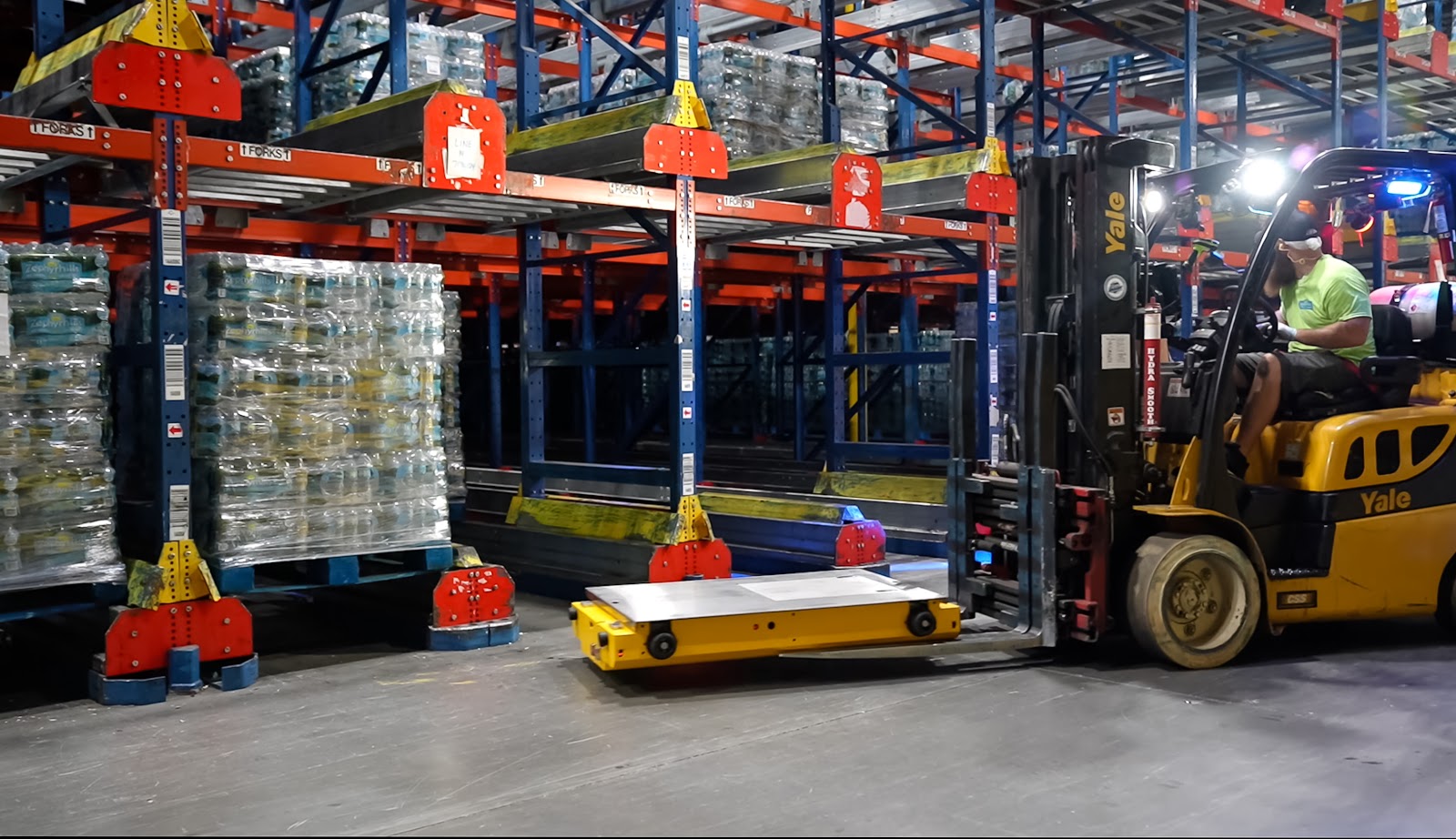Shuttle Systems vs Traditional Racking: Why Warehouse Automation Wins
In modern warehousing, static storage solutions like drive-in racks, push-back systems, and pallet flow lanes are increasingly being replaced by intelligent, automated alternatives. Leading the charge are pallet shuttle systems—like those developed by Spacemaker—that bring flexibility, speed, and visibility to storage operations once limited by manual processes.
This article compares traditional racking with Spacemaker’s warehouse automation solutions, highlighting the performance gains and strategic advantages that come with upgrading to shuttle-based systems.

The Limits of Traditional Racking
Drive-in, push-back, and pallet flow systems rely on gravity, forklifts, and rigid layouts. These designs are:
- Labor-intensive: Forklift drivers enter racking aisles, increasing risk
- Space-inefficient: Large clearance gaps reduce cubic storage capacity
- Prone to damage: Frequent rack impacts increase downtime and repair costs
- Hard to scale: No digital tracking or integration with warehouse systems
These legacy systems are static. And in today’s dynamic logistics environment, static equals bottleneck.

Enter Shuttle Intelligence: How Spacemaker Changes the Game
Spacemaker’s automated systems replace human-driven storage and retrieval with smart, self-powered shuttles. These systems deliver:
✅ Higher density: 85–90% storage utilization compared to ~60% in traditional racks
✅ Faster throughput: Up to 50% faster pallet movement, without forklift delays
✅ Improved safety: No need for humans to enter racking lanes
✅ Lower long-term costs: Reduced labor, lower rack damage, and scalable deployment
✅ Digital visibility: Real-time inventory, shuttle status, and system performance via MGM® and WMS integration
Real Results, Real Comparisons
A Smart Upgrade for Any Industry
From food and beverage to pharma and cold storage, Spacemaker systems are now the default upgrade for facilities looking to modernize. Whether retrofitting legacy drive-in racks or designing greenfield operations, shuttle-based automation offers flexibility and ROI that traditional systems can’t match.

